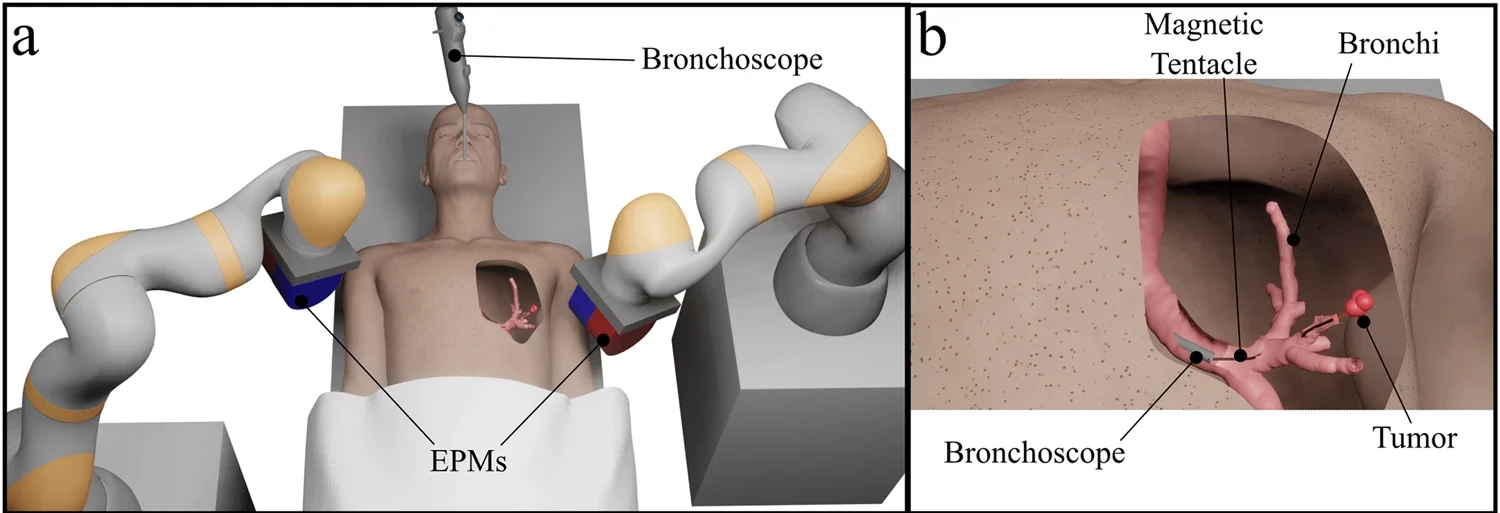Scientists have developed tiny robotic tentacles that travel into the lungs to detect and treat cancer.
The device is just 2.4 mm in diameter and ultra-soft. It’s sent to the periphery of the lungs from the end of a bronchoscope — a thin tube with a light and camera.
During the journey, magnets adapt the robot’s shape to the body’s anatomy. As it moves, both its form and position and form are fed back to a clinician. After reaching its destination, an embedded laser fibre can deliver localised treatment.
The robot was developed at the University of Leeds’ STORM lab, which tested the system on a cadaver. They found that it can travel 37% deeper than standard equipment, while causing less tissue damage.
“This new approach has the advantage of being specific to the anatomy, softer than the anatomy and fully shape-controllable via magnetics,” said Professor Pietro Valdastri, director of the STORM Lab, in a statement. “These three main features have the potential to revolutionise navigation inside the body.”


In time, the team hopes to transform the treatment of lung cancer. The disease has the highest worldwide cancer mortality rate, causing around 34,800 deaths annually in the UK alone. Currently, treatment is managed through invasive approaches, such as surgery, chemo- or radiotherapy.
In early-stage non-small cell lung cancer — which accounts for around 84% of cases — surgical intervention is the standard of care. Typically, this removes a large portion of lung tissue, which isn’t suitable for everyone and can harm pulmonary function.
The robot could provide a minimally-invasive alternative. According to the researchers, the delivery method can reduce pain, discomfort, and recovery time, while improving precision and safety. It could also allow treatment to target only malicious cells, allowing healthy tissue and organs to continue normal function.
“Our goal was, and is, to bring curative aid with minimal pain for the patient,” said Dr Giovanni Pittiglio, the report’s co-author. “Remote magnetic actuation enabled us to do this using ultra-soft tentacles which can reach deeper, while shaping to the anatomy and reducing trauma.”
The team will now collect the data needed to start human trials.
You can read their open-access study paper in Nature.
Services Marketplace – Listings, Bookings & Reviews